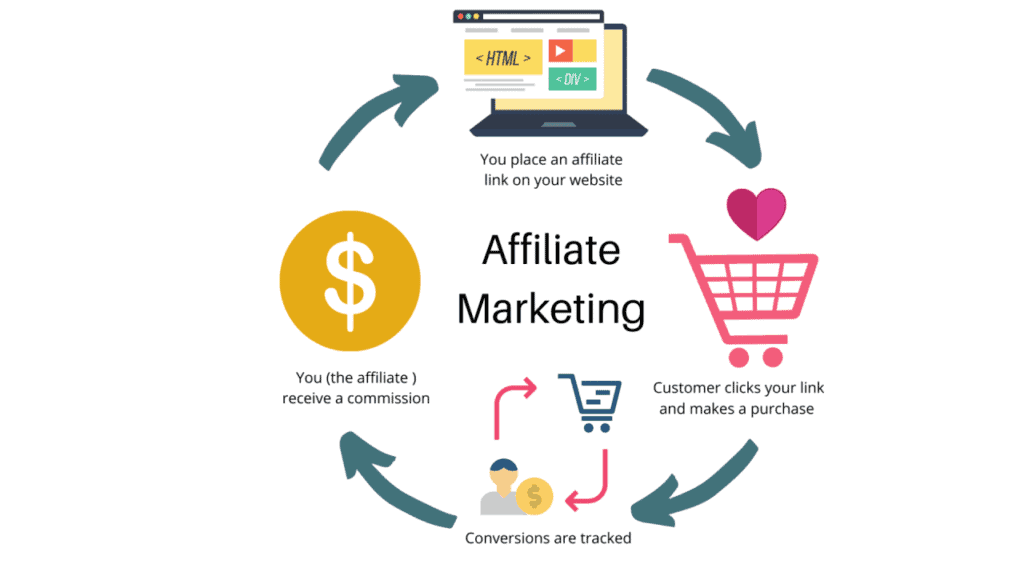
Partners or Solo Act? Demystifying Affiliate vs. Digital Marketing
In the ever-evolving landscape of online commerce, businesses face a constant battle for consumer attention. Two prominent strategies emerge in this digital duel: affiliate marketing and digital marketing. While their names may sound similar, their approaches and goals differ significantly. Understanding these distinctions is crucial for businesses and individuals navigating the online marketplace.
Core Focus: Partners or Solo Act?
The fundamental difference lies in the core focus. Affiliate marketing thrives on a collaborative spirit. Here, businesses (merchants) enlist the help of individuals or other companies (affiliates) to promote their products or services. Affiliates leverage their own platforms, like blogs or social media channels, to reach a target audience and drive sales or leads for the merchant. In return, they earn a commission based on the generated results.
Digital marketing, on the other hand, operates as a solo act. Companies take center stage, employing a diverse set of strategies to promote their own brand, products, and services. The goal is to cultivate brand awareness, engage target audiences, and ultimately drive sales through direct marketing channels. While digital marketing can incorporate collaborations with influencers or partner brands for specific campaigns, the focus remains on promoting the company itself.
The Players on the Field: A Three-Ring Circus vs. A One-Man Show
Affiliate marketing involves a three-player game:
- Merchants: These are the businesses offering the products or services being promoted.
- Affiliates: The individuals or companies responsible for promoting the products and driving sales or leads through their own channels.
- Customers: The target audience who purchase the products or services based on the affiliate’s promotion.
Digital marketing typically involves two main players:
- The Company: The business conducting the marketing campaign to promote its own brand, products, and services.
- Target Audience: The potential customers the company aims to reach through its marketing efforts.

There can be additional players in digital marketing, such as influencers or partnering brands, but the focus remains on the company’s marketing goals, rather than building a sales structure around commissioned promotions.
Revenue Streams: Commissions vs. Long-Term Growth
Affiliate marketing operates on a commission-based revenue model. Affiliates earn income based on their performance in driving sales or leads for the merchant. This can involve a percentage of the sale price, a fixed fee per lead generated, or a combination of both.
Digital marketing plays the long game. Companies invest in online marketing activities not solely for immediate sales, but to achieve broader marketing objectives. These objectives can encompass:
- Brand Awareness: Increasing brand recognition and establishing a positive brand image among the target audience.
- Lead Generation: Capturing potential customer information for future sales and marketing efforts.
- Customer Acquisition: Converting leads into paying customers.
- Sales Growth: Increasing overall sales volume by attracting new customers and retaining existing ones.
- Engagement: Fostering interaction with the target audience, building brand loyalty, and driving repeat business.
While short-term sales boosts are a welcome outcome in digital marketing, the overall focus lies in creating a sustainable growth trajectory for the company.
Tools of the Trade: Diverse Approaches to Reaching Consumers
Both affiliate marketing and digital marketing utilize a variety of online channels to reach target audiences, but the chosen tactics differ based on their objectives.
Affiliate marketing often relies on:
- Content Marketing: Creating informative and engaging blog posts, articles, or videos that showcase the benefits of the promoted product or service.
- Social Media Promotion: Utilizing social media platforms like Facebook, Instagram, or Twitter to reach a wider audience and share affiliate links.
- Email Marketing: Building email lists and sending targeted email campaigns promoting the affiliate product or service.
- Website Banners: Embedding banners or ads on websites with relevant traffic to display affiliate links.

Digital marketing takes a more comprehensive approach, employing a wider range of strategies and tools:
- Search Engine Optimization (SEO) & Search Engine Marketing (SEM): Optimizing a company’s website and online presence to rank higher in search engine results pages (SERPs) for relevant keywords, increasing organic traffic and visibility.
- Content Marketing: Similar to affiliate marketing, creating high-quality content like blog posts, infographics, or videos to educate and engage the target audience about the company’s products or services, fostering trust and brand loyalty.
- Social Media Marketing: Like affiliate marketing, using social media platforms to connect with the target audience, share branded content, promote company updates, and run targeted social media advertising campaigns.
- Email Marketing: Similar to affiliate marketing, building email lists and crafting targeted email campaigns to nurture leads, promote products and services, and drive customer engagement.
- Pay-Per-Click (PPC) Advertising: Utilizing platforms like Google Ads or social media advertising to run


